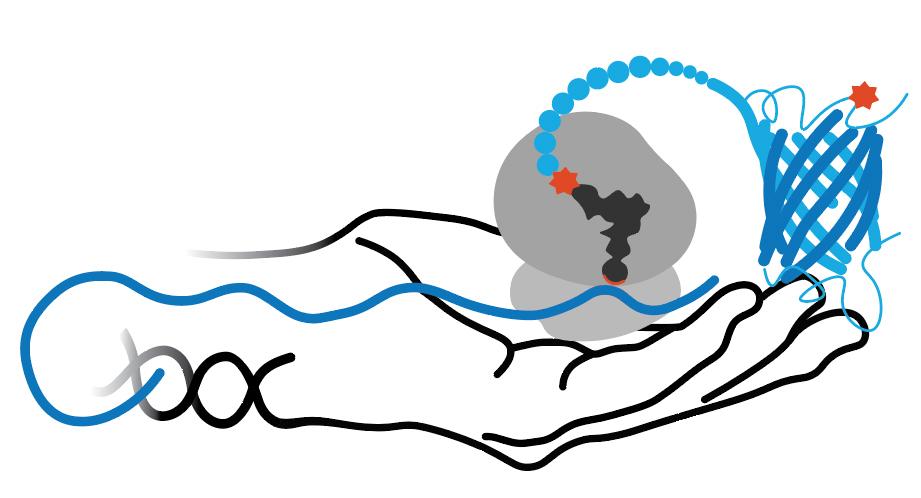RS/tRNA Foundational Publication Support
Jones, Chloe M, Miklos Robkis, Robert J Blizzard, Mika Munari, Yarra Venkatesh, Tiberiu Mihaila, Alex Eddins, et al. (2021) 2021. “Genetic Encoding Of A Highly Photostable, Long Lifetime Fluorescent Amino Acid For Imaging In Mammalian Cells.”. Chemical Science 12 (36): 11955-11964. doi:10.1039/d1sc01914g.
RS/tRNA Pair Development Year
2021
ncAA(s) Incorporated
acridonylalanine
ncAA Structure (png, jpg, jpeg)

ncAA Utility
It is a blue-wavelength fluorescent probe used for monitoring conformational changes and other molecular dynamics in proteins. The 2013 and 2021 foundational publications provide information on its properties, and a 2023 paper (doi: 10.1002/pro.4633) provides examples of its use in FRET studies.
RS Organism of Origin
Parent RS
RS Mutations
N311S
C313G
V366A
W382T
C313G
V366A
W382T
tRNA Organism of Origin
Parent tRNA
tRNA Anticodon
N/A
Multiple tRNAs?
Original test expressions in eukaryotes were done with M. mazeii PylRS tRNA(CUA) and Desultobacterium hafniense PylRS tRNA(CUA)
RS/tRNA Availability
For academic uses, plasmids available through Addgene repository are listed at https://www.addgene.org/browse/article/28220061/
Addgene 174099 in pDule
Addgene 174100 in pDule2
Addgene 174101 in pAcBac for mammalian expressions
Addgene 174099 in pDule
Addgene 174100 in pDule2
Addgene 174101 in pAcBac for mammalian expressions
Used in what cell line?
RS/tRNA Additional Notes
Non-active site L155V mutation that also present in original selected RS was removed before testing. Tested with a synuclein and calmodulin (3 sites each) with 6 to 74% efficiency and full fidelity by MS analysis and no misincorportation of Npf, either in E. coli or in mammalian cells. Efficiency was ~29% with GFP150 in mammalian cell test at 300 microM Acd; UP50 is about 50 microM.
Eukaryotic test expressions used the pAcBac1 tR4-MbPyl vector, which contains two copies each of cognate Mm PylRS tRNACUA and Desultobacterium hafniense PylRS tRNACUA. These plasmids were transfected into HEK293T/17 cells together with a dominant negative eukaryotic RF1 construct (DN-eRF1) that enhances ncAA expression yields in mammalian cells.
Eukaryotic test expressions used the pAcBac1 tR4-MbPyl vector, which contains two copies each of cognate Mm PylRS tRNACUA and Desultobacterium hafniense PylRS tRNACUA. These plasmids were transfected into HEK293T/17 cells together with a dominant negative eukaryotic RF1 construct (DN-eRF1) that enhances ncAA expression yields in mammalian cells.
